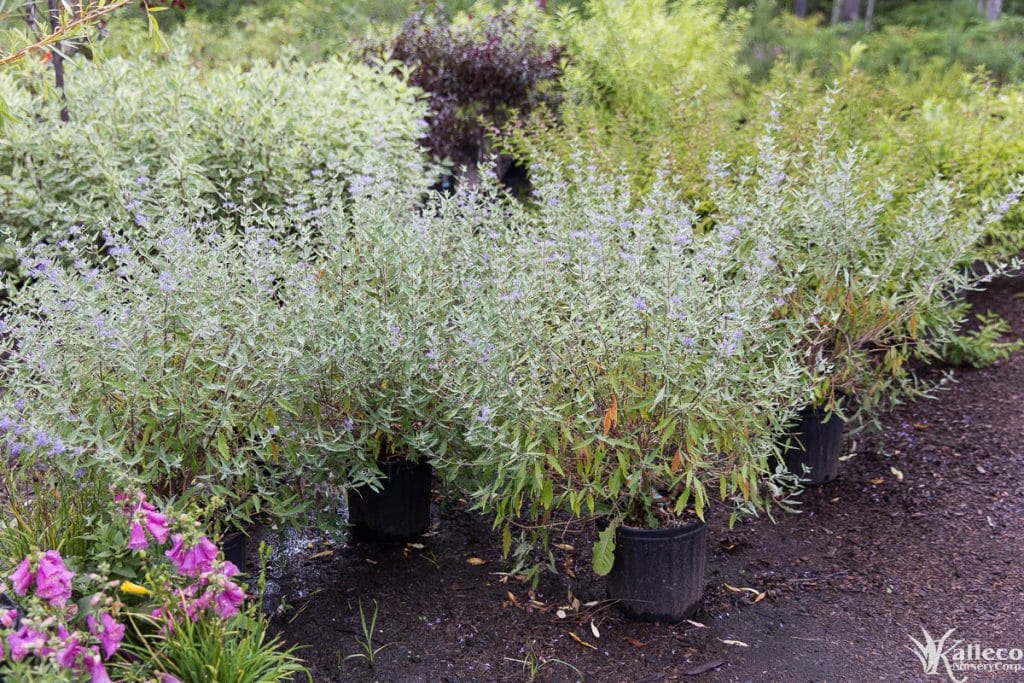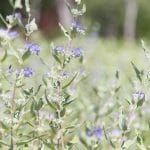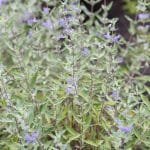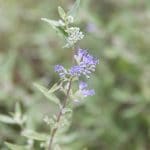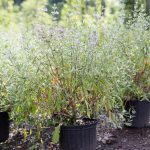Caryopteris x Clandonensis
Common Names: “Blue Beard”; “Blue Spirea”; “Blue Mist”
Description: Caryotperis is sometimes called “blue spirea”, an apt name. This woody shrub is small with a mounding tendency. Its long, pink-ish stems bear angular leaves. Its foliage is usually silver-green or silver-yellow.
In the late summer and early fall, it produces tight clusters of small, blue-purple flowers. Their size and delicate texture earn this plant its other nickname: “blue mist”.
Planting and Growth Habits: Plant caryopteris in a sandy spot where it will get plenty of sun. It thrives in the heat with little watering, making it a great choice for the water-conscious garden.
Caryopteris is fast growing. Once established, it can grow about 18’ – 30’ a year, though it usually tops off at about 3’ in height. Older stems will become woody, giving it a little structure. The signature blue blooms will only occur on new growth, so pruning is necessary. Cut the year’s growth back to 3” stems in the late winter to promote vigorous new growth in the spring.
It’s important to note that Caryopteris may suffer in particularly cold winters. Cutting back new growth at the end of the warm season will help keep damage minimal. If you do find it frost damage, removed dead branches.
Special Characteristics: Drought-tolerant; full sun; fragrant; late summer interest; fall interest.
Complements and Planting Design Tips: Nursery Manager Meghan loves Caryopteris because, in her words, “A bright purple flower leading into the fall is always beneficial!” It’s a great way to prolong color in sunny landscape beds. Get a beautiful late summer show by planting it with rudbeckia for contrast.
Try planting it in a shrub border with St. John’s Wort to emphasize the cool blue, green and purple, or with spirea to get a variety of colors and a unified texture. It also pairs well with boxwood – the light leaves and flowers pop against the darker foliage.

